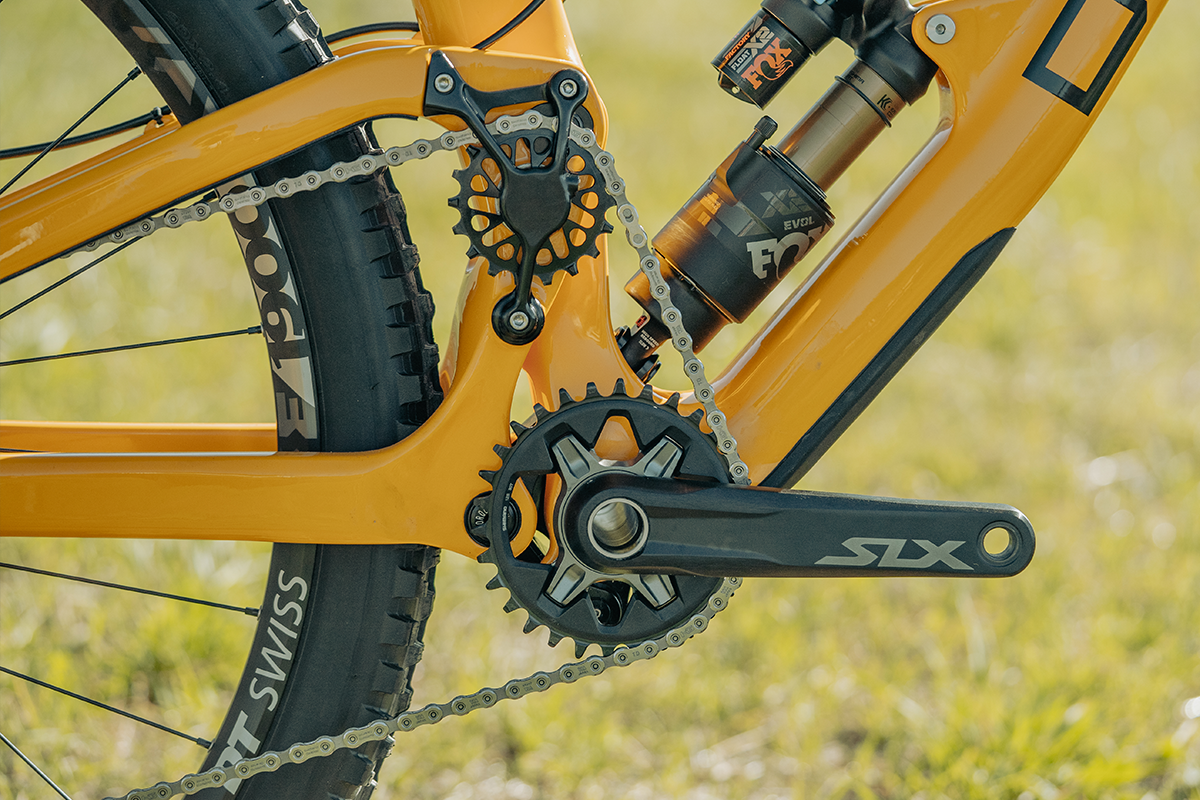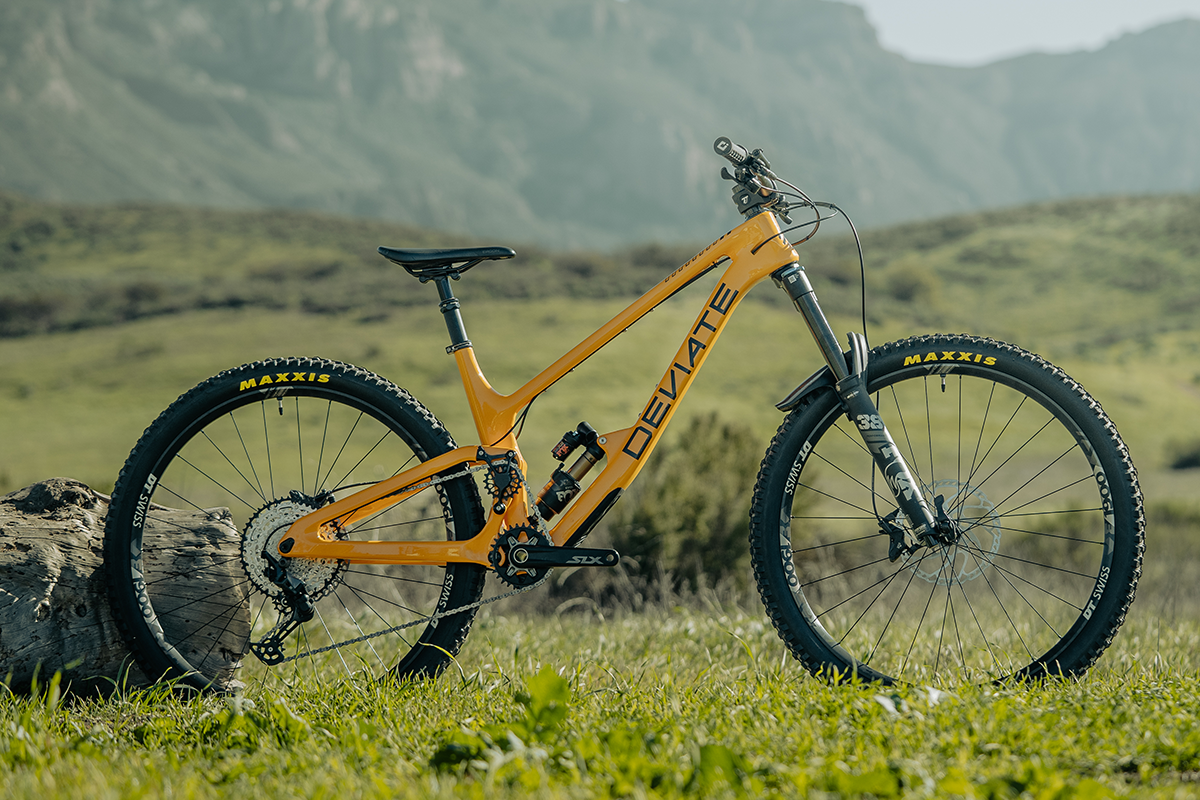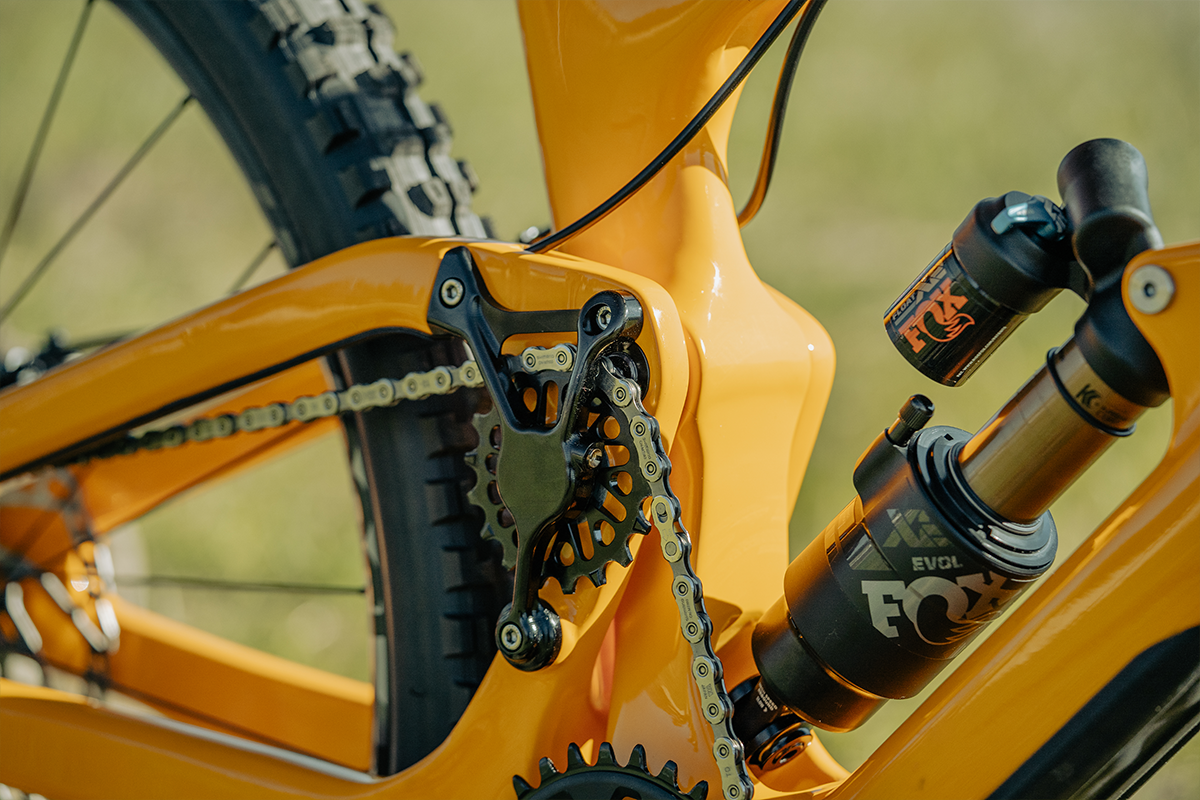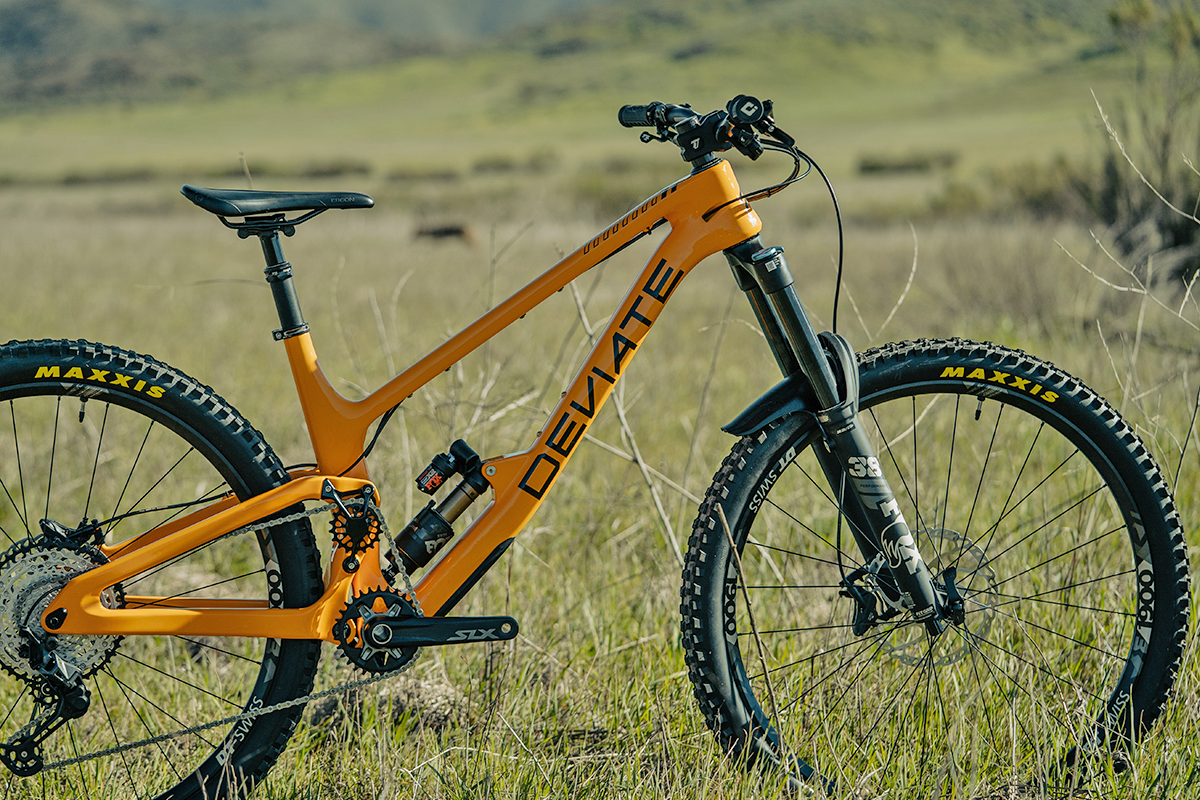- Continue Shopping
- Your Cart is Empty
Deviate Highlander 150 Review - A Heavy Hitting High Pivot Trail Bike
Traction Isn't Trendy:
The Deviate Highlander is one of the new breeds of trail bikes that use a high pivot suspension design. Rocking 150mm of rear travel (there is also a 140mm version) and 150mm or 160mm of front travel, the Highlander 150 blurs the lines between trail and enduro bikes. As high pivot trail bikes gain traction (pun intended), we are starting to see more brands adopt this new design. But Deviate deserves recognition for being one of the first brands to use high pulleys on a trail bike. In fact, they used a high pivot design (and a gearbox!) with their old enduro bike too, the Guide. Deviate certainly has been ahead of the curve with their first two bike models.
As mentioned above, the Highlander sits on the upper side of trail bikes when you look at the numbers but it could also be ridden as an enduro bike depending on how you choose to spec the bike. The way I have been riding the Highlander 150 is more like an enduro bike, with 150mm of rear travel and 160mm of front travel and a beefy build kit. My setup is ready to tackle big climbs and chunky, demanding descents.
What Is A High Pivot?
First off, we can all see that the bike is a high pivot. I’ll let the experts and engineers of Deviate explain why they chose to use this type of suspension design. They can explain the wizardry of suspension kinematics better than I can. Essentially the idea of the high pivot is to allow the rear wheel to travel out of the obstacle's way and then rotate upward like a traditional suspension design. You might imagine the path of the rear axle making the shape of a football when the bike goes through its travel. As you hit rocks and bumps in the trail, the rear wheel actually moves backwards and up compared to most other suspension designs that move in a much more vertical line. This allows for a more composed rear end when you are hard charging through rough terrain.
Another cool thing about the Deviate Highlander is that the front and rear triangles are the same between the 140 and 150. If you’re wanting to swap the bike between the two different travel lengths, you can do so by changing out the linkage. The same shock even stays the same between the two.
Features:
The Highlander is packed with all the features you want to see on a modern trail bike. One of my favorite aspects of the frame design is the semi-hidden cable routing. The Highlander can run the rear brake and shift cable along the underside of the top tube where there is a channel that the cables sit in, totally obscuring them from view from most angles. There are two pairs of bolts holding the cables, and to make things better each pair is spaced the same distance as a frame water bottle boss, so you can bolt lots of stuff up there. I love seeing fine little details like this and I am able to bolt on my Wolf Tooth B-Rad accessory strap holding my spare tube and all that. There is also a ZS44/ZS56 headset cup that gives you a few more options to play around with different headsets if you choose to do so. Moving to the back of the bike we have a threaded bottom bracket, an enclosed upper pulley wheel with zerk grease ports on the pulley bearing for easier servicing, and a post mount 180mm rotor spec.
Specs:
- Headset: ZS44/ZS56
- Fork Compatibility: 29” 160mm with 44/42mm offset.
- Bottom Bracket: 73mm BSA Threaded
- Chain Idler: 18t
- Shock Hardware: 30x8 front, bushing rear
- Chainline: 52mm. (Also any 126 linked chain will work, no need to join chains)
- Seatpost: 31.6”
- Rear Wheel: 29” Boost, 148x12
- Rear Brake Mount: 180 Post
Deviate Highlander 150 Geometry:
On The Trail:
As I mentioned, I like to set up my bikes to be pretty heavy and durable. I love enduro races, so I would rather finish a gnarly race on something a little beefier rather than needing to limp to the finish line because of lighter components. For instance, I spec all of my bikes with downhill grade wheels and Cush Core front and rear with Double Down front and DH casing rear Maxxis tires. So with that being said, I have a tendency to notice when a bike climbs pretty well or not. The Deviate Highlander surprised me for how well it does when it comes to technical climbs.
Don’t get me wrong, it's no XC bike. But out of all the enduro style bikes I’ve owned, the Highlander climbs harsh technical trails the best. The high pivot with the idler pulley helps eliminate pedal kick back. So when the bike hits a square edge, the suspension continues to work to maintain traction. With a traditional system, you’ll notice that the suspension won’t be active in the initial hit which unsettles the rear end and causes less traction when pedaling.
When pointing the bike downhill, it lives up to the hype that marketing campaigns are making high pivots out to have. I typically like to ride steep and loose trails where the climb is about an hour up and the descent typically looks like 10mins of 2000ft in about two miles. Therefore, I’m always fidgeting with my settings to try to find the right setup to keep the rear end settled and not get bucked around. After riding my common trails with the Highlander and after some suspension adjustment, the bike has absolutely blown me away. Through the fast chunk, I don’t find myself fighting the rear end to stay straight. Instead, I just stay comfortable on the bike and let the suspension do its work and the bike stays on a rail. Just imagine the days when your bike feels really good and you can’t seem to figure out why. Well, this bike is like that every day.
While on flow trails, the bike still amazed me. Because the rearward axle path grows the wheelbase, I was worried that the bike would be sluggish and unresponsive when in the apex of the corner. But, some other wizardly stuff happens and the bike corners like it’s on rails. Again, because of the growing wheelbase, it actually allows the bike to have more traction within the corner but stays responsive so the bike feels like a slot car.
The most noticeable characteristic that the bike has is the speed it allows you to carry through chunk that would typically make your rear end skip around. The bike gives you so much confidence in rocky sections that you’ll want to session gnarly stuff all the time to see just how much faster you can take it.
Setup:
Like every other bike, it takes a minute to get everything set up. The only main issue I had was working out the volume spacers with the shock. The shock I specced on the Deviate was the Fox Float X2. Because the bike already feels good off the top it was hard to notice where the mid-stroke support was, so it felt like I would blow through the travel. But it was just a simple fix of adding two tokens to the shock and the mid-stroke support was much more noticeable. Also, it livened the back end up a lot by becoming more poppy and providing more feedback from the bike when pushing through corners. With that being said, this still isn’t a terribly poppy bike. You can tell that it feels at home on the ground plowing through rocks. I was able to get it poppy enough for my liking, but by no means is it a freeride bike that wants to be hucked off of massive lips. But hey, it wasn’t really designed for that anyway.
Pros:
- High pivots are fast through chunk
- No kick back with idler pulley
- Holds speed extremely well
Cons:
- Something more to worry about with the drivetrain
- Pulley adds drag
Who Is The Deviate Highlander 150 For?
If you’re someone that likes to push your bike and see how fast you can take sections, this high pivot Deviate is most definitely for you. I would have a hard time recommending this bike to someone that wants to constantly jib around and yank off of little things. Although the bike does do those things well enough, where the bike excels is when someone with more of a racer mindset throws a leg over the bike and constantly wants to test their speeds in sections. The high pivot design isn't all about hype. There are some real benefits from using this suspension design, like holding speed through chunk. Having the rear end remain planted and consistent is certainly the highlight of the Deviate Highlander.













